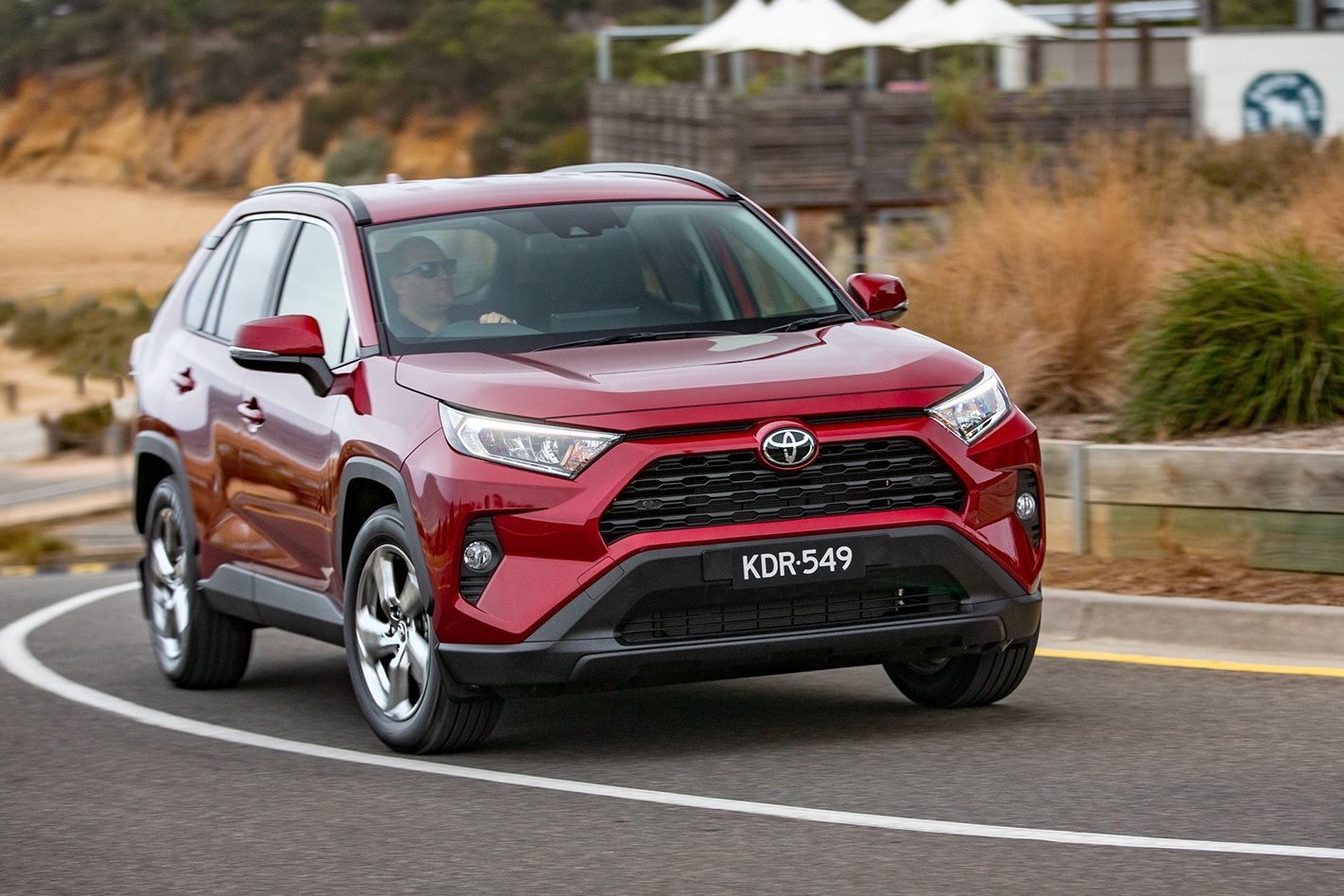Things we like
- Vastly improved steering, body control and general dynamics over the outgoing model
- Cabin packaging
- Competitive level of standard safety and convenience equipment
- Affordable servicing program
Not so much
- Real-world price rise vs outgoing model
- Engine can struggle with full load in hilly terrain
- Lack of height adjustment for front passenger seat
The Wheels Verdict: In a broader, model-wide sense, RAV4 has leapt from being a class also-ran to being right up the pointy end, but you still need to pick the correct model for your driving needs. If those requirements include fully loaded family touring, it’s likely this 2.0-litre front-driver is not the sweet spot; you’re likely to be much more satisfied by spending the extra money on the more muscular and frugal hybrid powertrain.
Conversely, if you’re looking for that second car that will mainly fulfil urban round-around duties, this GXL front-driver could be all the RAV4 you’ll ever need.
WHAT IS THE TOYOTA RAV4 GXL?
The fifth generation of Toyota’s pioneering, segment-defining mid-size SUV, offered in an extensive range of four spec levels and three powertrains for a total choice of 11 models. Here we’re focussing on the model without the hybrid assistance of an electric motor and battery; instead it’s powered by a 2.0-litre four-cylinder atmo petrol engine with CVT transmission driving the front wheels.
WHY WE’RE TESTING IT
Based on the sales performance of the outgoing RAV4 and market-dominating force that is Toyota, this new model has the potential to be a best-seller in this medium-SUV segment.
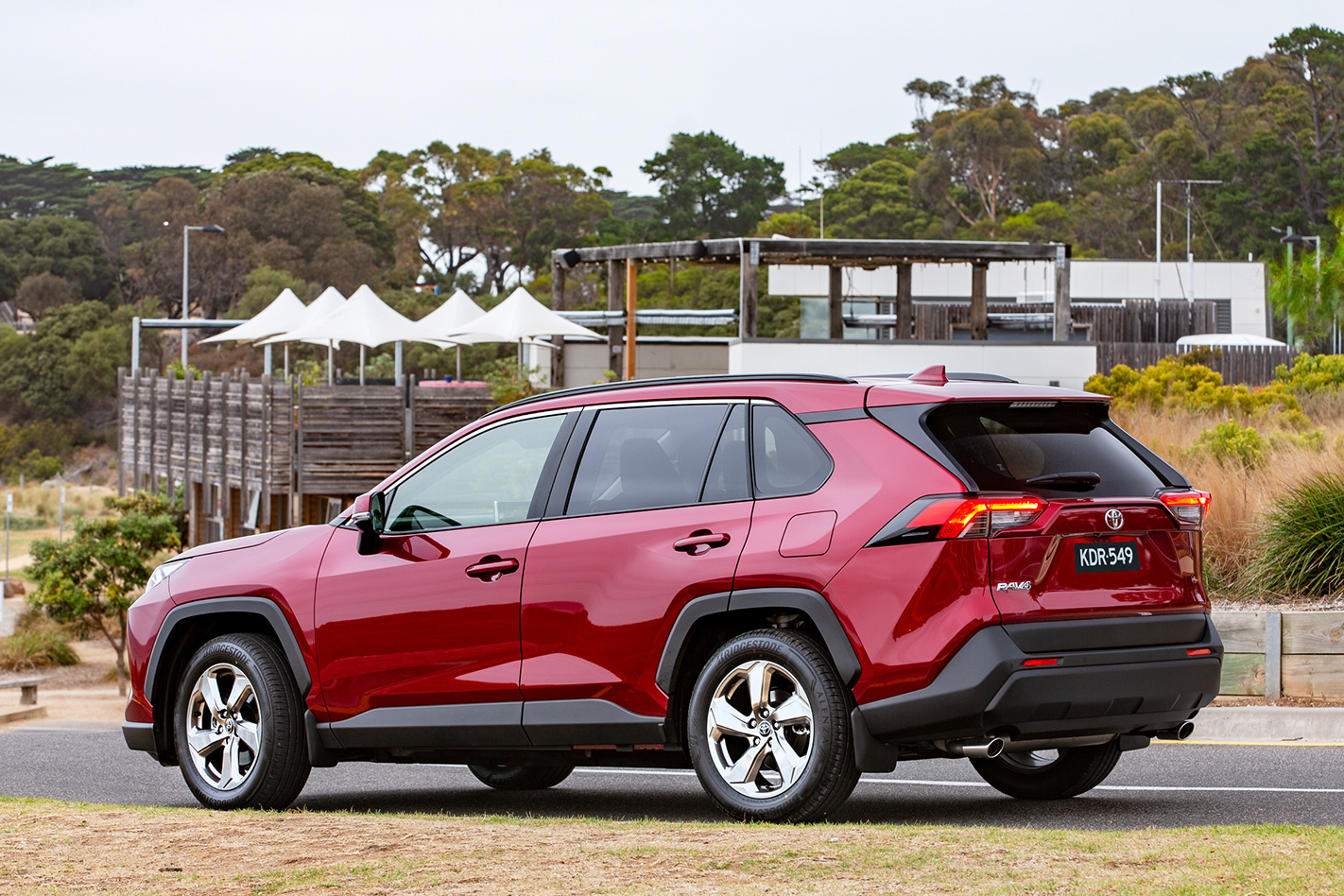
TOYOTA RAV4 GXL REVIEW
It’s taken five generations for Toyota to offer hybrid power to what has been the world’s best-selling SUV, and the company is not about to squander that advantage with elitist pricing tied to high spec levels for the petrol-electric drivetrain.
No, you can have the 163kW, 221Nm hybrid system for $3500 more than the basic petrol powertrain in the entry-level GX grade, making it within reach for most buyers in the medium-SUV segment.
Such is structure of the 11-model RAV4 range, Toyota expects 40 percent (at least) take-up for the Hybrid.
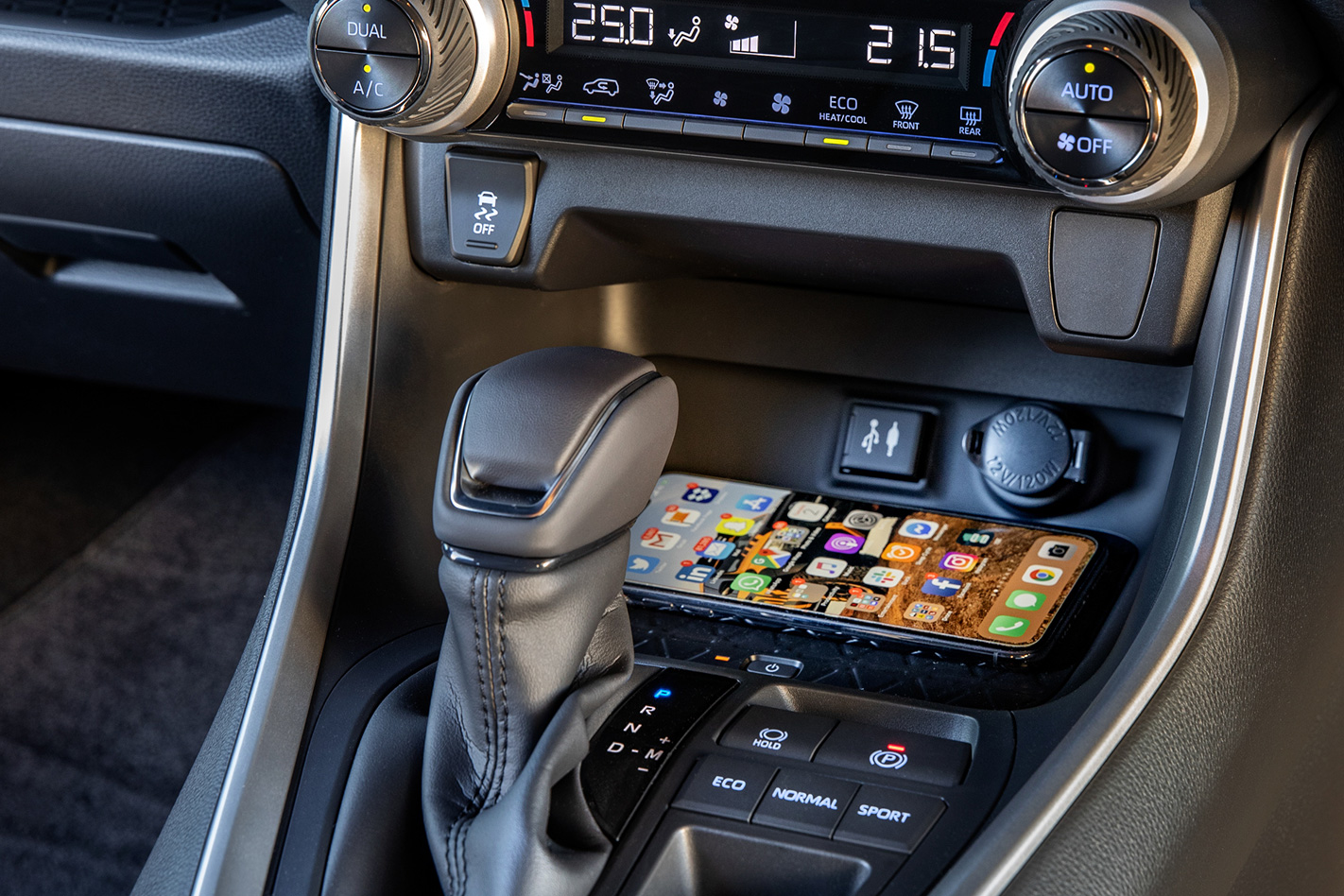
But what about non-hybrid versions of the new RAV4? Even if the take-up of the Hybrid is a hefty 40 percent, that still means the (slight) majority will elect for petrol-only power, so does deleting the motor and battery kill the spark?
Well, first impressions for anyone who’s never driven the hybrid will be mostly ambivalent, because the 2.0-litre doesn’t feel particularly different from other contenders in this class when you’re just pooling along the suburbs. This revised engine runs a high 13:1 compression ratio in the Atkinson cycle, is fed by both port and direct injection, and is up a healthy 20kW on its predecessor. Further, Toyota’s unique approach of mating a conventional auto first gear with a CVT helps mask ⎼ initially at least ⎼ the comparative lack of torque and the inclination for that droning, band-slipping syndrome to which CVTs are prone.
But 203Nm can only take you so far, metaphorically speaking, and the relative lack of torque quickly becomes apparent the moment you ask more of the throttle pedal, or venture outside of suburbia with a few bodies on board. A torque-to-weight ratio may sound a bit technical, but its real-world effects are brought into stark relief in the non-hybrid RAV4.
You, plus, let’s say one other adult and two early teens, will add around 280kg to the RAV4’s payload, taking the overall weight with fuel to something close to 1850kg, and you’ll feel it when trying to overtake on inclines. Wide-open throttle and less-than-hushed noise follows. It’s not awful at high revs, but it is a bit frenetic and not especially pleasing on the ear. More concerning is the effect on overtaking performance, where you need to pick your opportunities way more judiciously than when in an SUV with more torque.
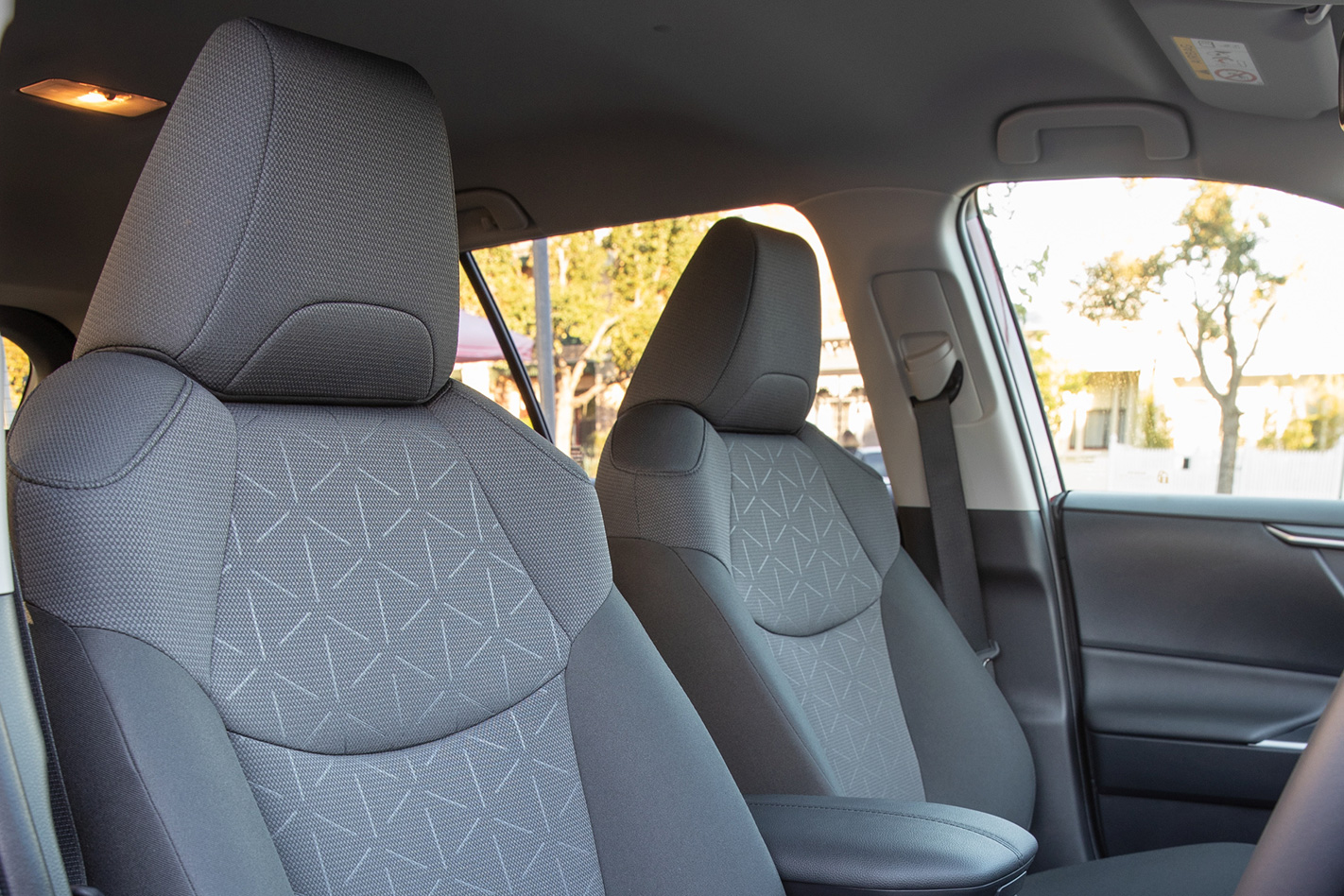
At least dynamically, the GXL front-driver claws back points, especially on typical Australian B-roads. We drove briskly in the hills above Adelaide, and were consistently surprised at just how adept this chassis set-up is dealing with our lumpy bitumen. Frankly, there was almost a momentary mental disconnect at glancing down at the Toyota logo on the steering wheel boss and then feeling how adroitly the car was performing over challenging surfaces.
No RAV4 in the history of the nameplate has been able to retain this sort of composure over local B-roads. Every dip, wallow and rut is dispensed with utter disdain, the damper tune never heaving, or needing a second rebound stab at regaining composure.
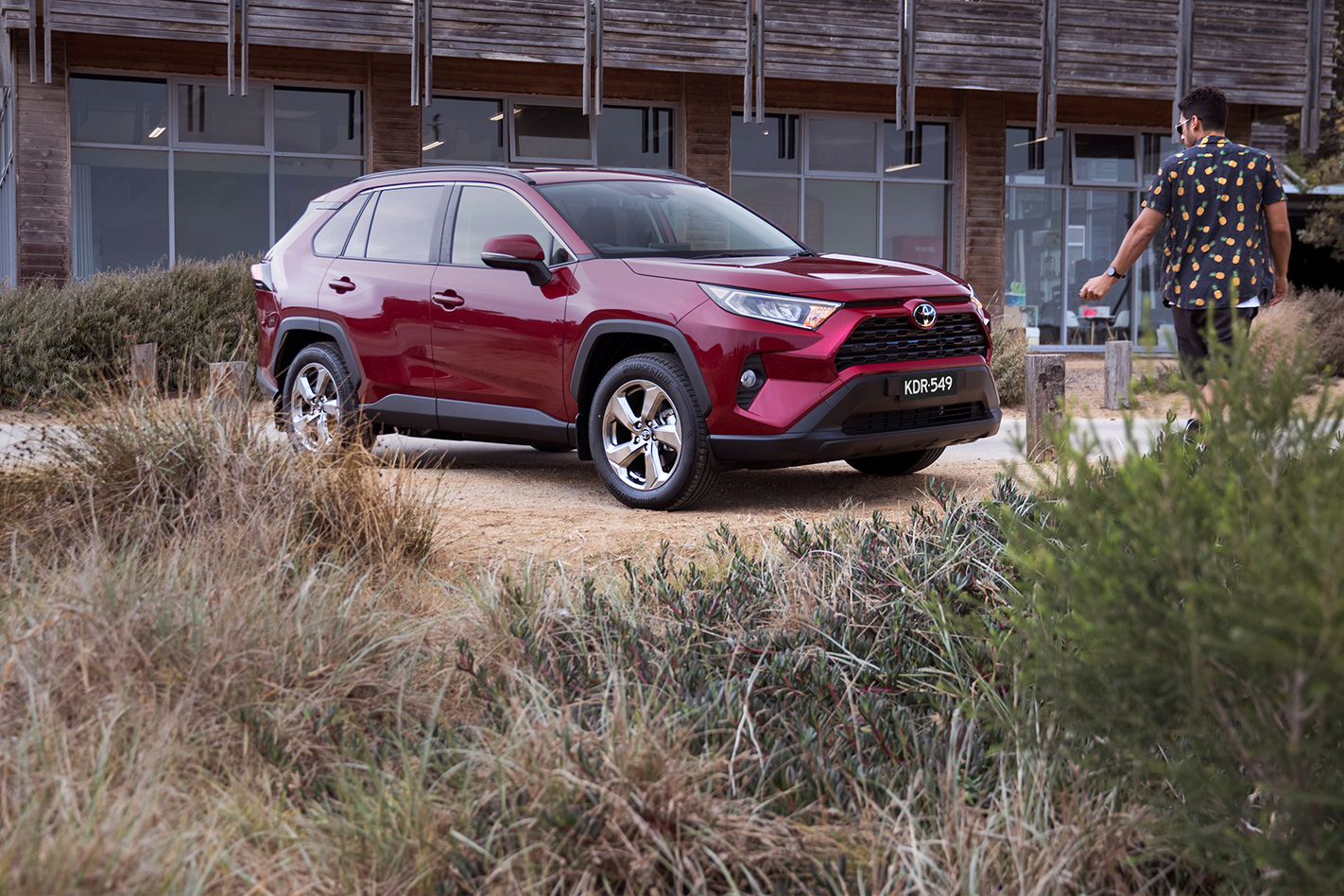
But as for traction, that’s a different story. Granted, our testing was in the wet, massively exacerbating the differences between the FWD set-up and the hybrid AWD. But the inescapable fact is the front-drive car will scrabble and push and activate its electronic systems at far lower velocities than the Hybrid AWD. Yes, the FWD car still does have commendable grip levels thanks to the excellent Bridgestone Alenza rubber, but if you’re a keen driver who wants to crack on in slippery conditions, the FWD set-up demands you ease your expectations in terms of turn-in and power-down ability.
As for efficiency, this RAV4’s official consumption number is 6.5L/100km, a handy improvement on the 7.0L/100km of its equivalent predecessor. But that number of 6.5, as frugal as it sounds, is still well above the official number of 4.7L/100km for the Hybrid model, and our real-world testing suggests you’ll have a far greater likelihood of coming closer to the Hybrid’s number than you will of achieving parity with this model. With a heavy skew on urban driving, expect to use at least high-sevens in the petrol-only RAV4.
So what about equipment, when you’re opting for the GXL spec instead of the next-rung-up Cruiser? Well, the shortfall is not too brutal. Bluetooth phone and media streaming is standard on all models, though smartphone mirroring via Apple CarPlay or Android Auto remains off the menu for all RAV4s until a running update arrives toward the end of this year. Thankfully, mirroring will be available as a retrofit for cars sold between now and then.
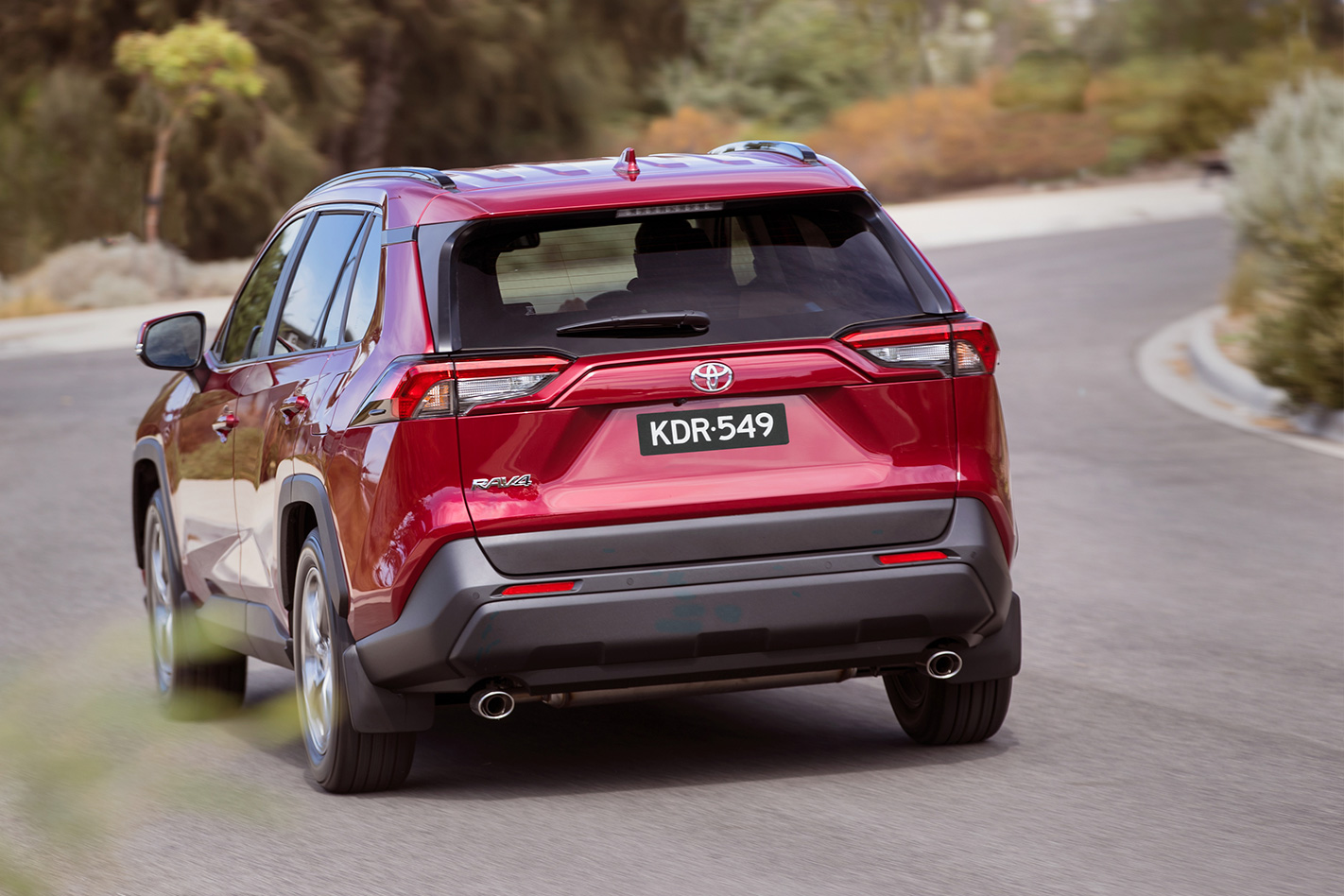
GXL gets dual-zone climate control as well as a wireless phone charger at the base of the centre stack, while audio comprises a non-name six-speaker set-up; you miss out on the far punchier, superior-sounding nine-speaker JBL audio system fitted to Cruiser and Edge models.
You also need to settle for cloth upholstery and manually-adjusted seats in the GXL, forgoing the the Cruiser’s heated front seats with 10-way electric adjustability for the driver.
Active cruise control, collision detection and AEB are standard on all cars, along with seven airbags, a rear-view camera, lane-departure warning, blind-spot monitoring, rear cross-traffic alert, front and rear parking sensors, speed sign recognition and auto high beam.
GXL and above also gets you the more advanced active cruise control that can operate all the way down to 0km/h, allowing stop-start traffic jams to be negotiated with cruise control taking care of your speed and separation to traffic.
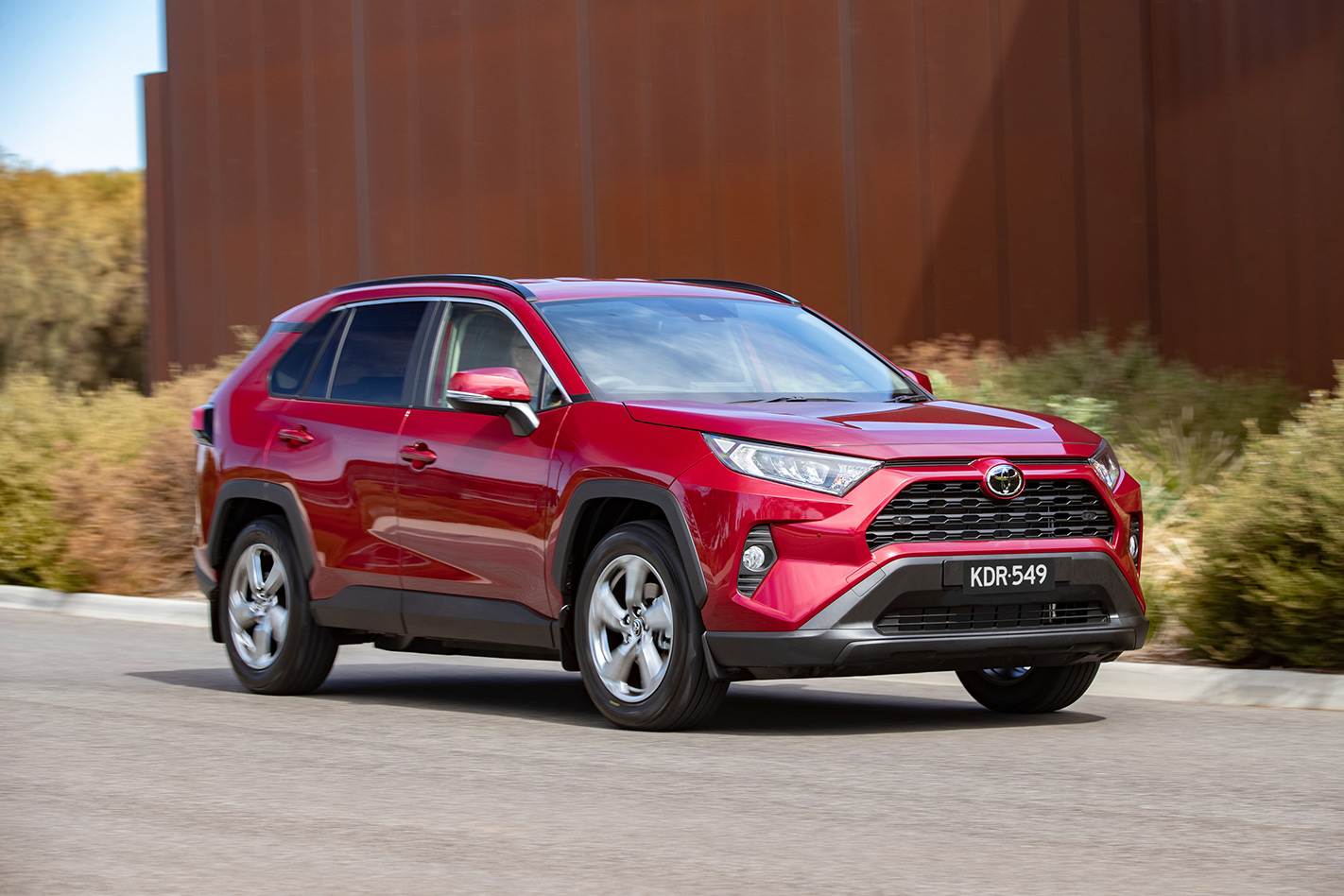
The more advanced active cruise control also brings lane-keep assist, which helps steer the car to keep it within lane markings when cruise control is switched on. That system isn’t available for the GX, given its different cruise control set-up, so consider that another tick for the GXL.
So, in the wash-up, the petrol GXL does come with a few caveats. For owners simply looking for their RAV4 to do fairly undemanding urban duties, it’s not hard to see why a saving of $3500 will look pretty appealing. However, for everyone else expecting a fair bit more real-world performance and powertrain capability ⎼ not to mention greater efficiency ⎼ that extra spend will be one of the better investments you’ll make.

RIVALS
Mazda CX-5 Maxx Sport FWD, Subaru Forester 2.5i-L, Honda CR-V VTiE, Holden Equinox, Ford Escape Trend FWD
TOYOTA RAV4 GXL PRICE AND SPECS AUSTRALIA
- Model: Toyota RAV4 GXL petrol FWD
- Engine: 1987cc 4cyl, dohc, 16v
- Max power: 127kW @ 6600rpm
- Max torque: 203Nm @ 4800rpm
- Transmission: CVT
- Weight: 1545kg (estimated)
- 0-100km/h: 9.8sec (estimated)
- Economy: 6.5L/100km
- Price: $35,640
- On sale: Now
Things we like
- Vastly improved steering, body control and general dynamics over the outgoing model
- Cabin packaging
- Competitive level of standard safety and convenience equipment
- Affordable servicing program
Not so much
- Real-world price rise vs outgoing model
- Engine can struggle with full load in hilly terrain
- Lack of height adjustment for front passenger seat


